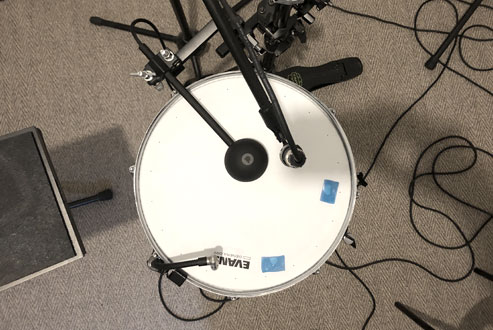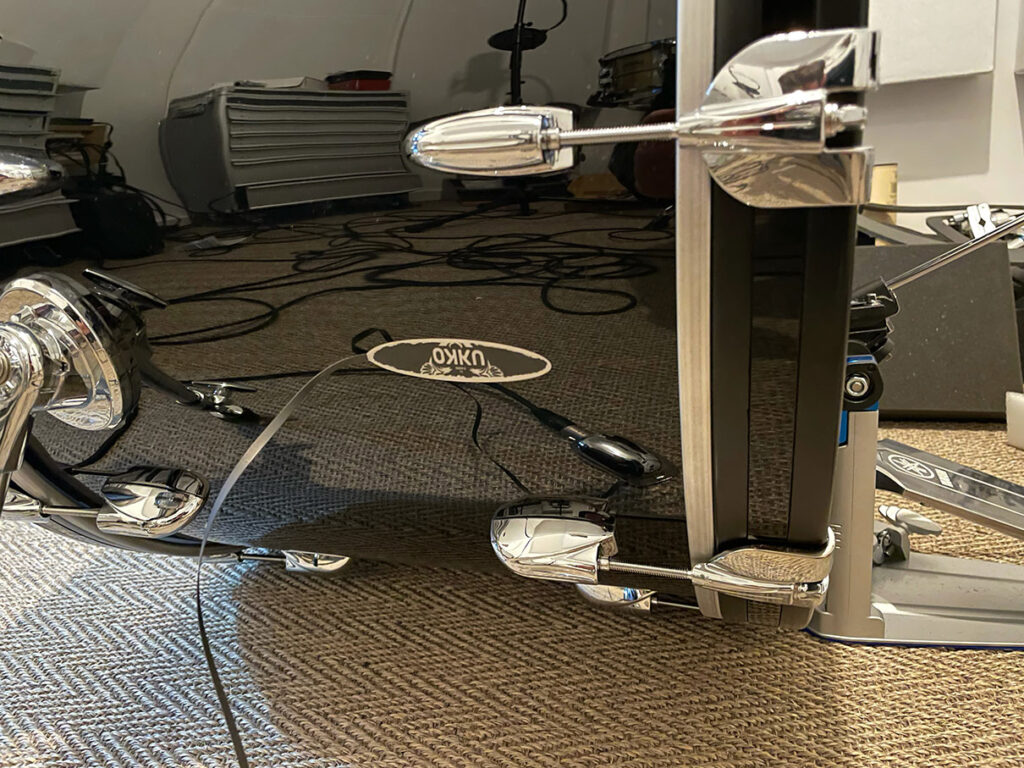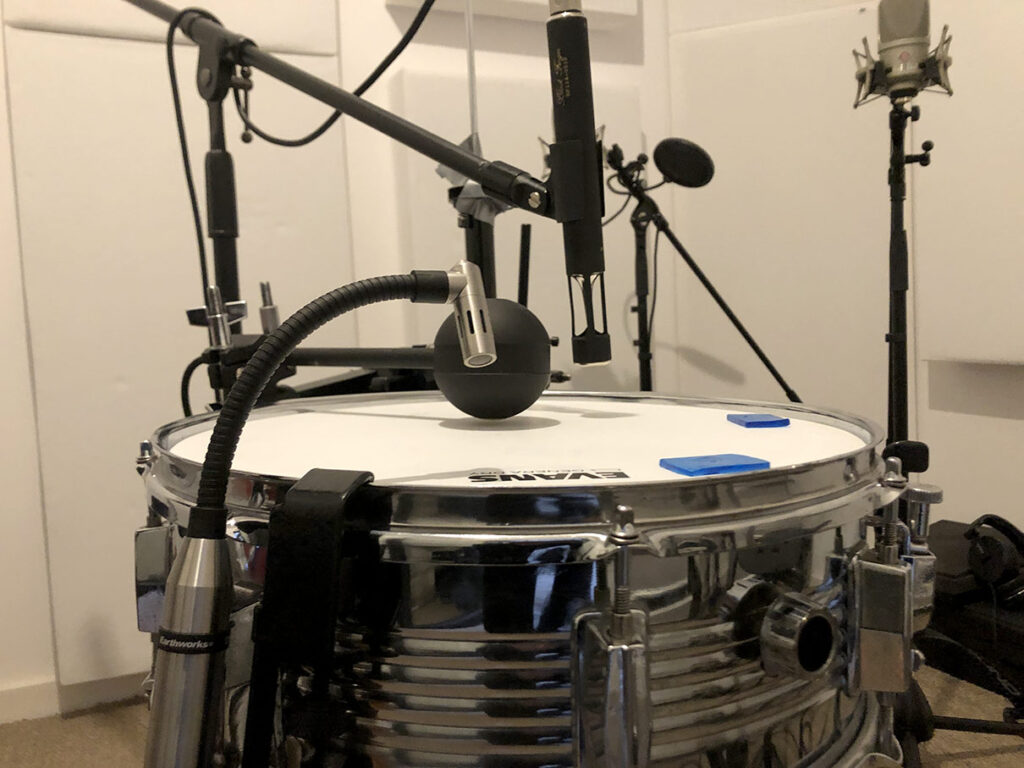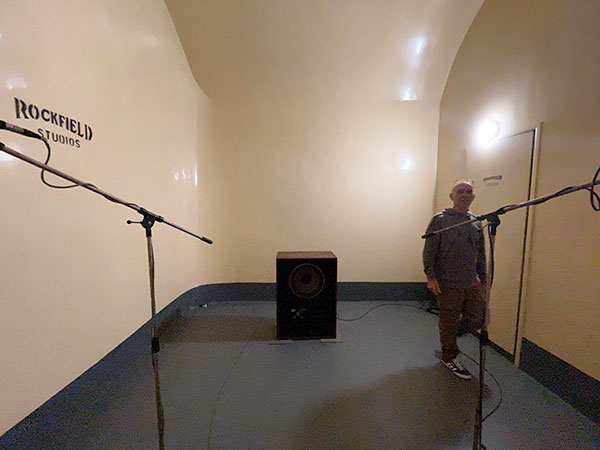New Drum Machines Pt II: AC-DR Sampling Process
By Soniccouture | 16.11.2023

To create sounds for AC-DR we experimented for some time with alternative recording techniques for acoustic drums that step away from traditional studio drum mic-ing. Using a very dead recording space to give a crisp, dry sound was the first step. Tuning the drums towards the highest end of their range also takes them closer to the sound of classic drum machines: the 909 bass drum particularly has a very high pitch when compared to an acoustic bass drum, yet conversely is renowned for its deep, punchy sound. The way that this bass drum sits in a modern dance/pop mix is largely down to its higher pitch.
RECORDING
As well as traditional mics, specialist Ukko drum contact mics were used: to create the ‘knock’ and ‘shell’ sound on the bass drums and toms, the ‘metal’ sounds on the hi-hats & rides, and the ‘body’ channel for the cowbell. While these mics are certainly not full sounding on their own, they add a certain synthetic texture to the mix.
The ‘Trans’ (transformer) signal featured on BD and TT was created by sending the samples through an Overstayer saturation hardware unit. Again, as with all the sampling, a full set of 10 round- robins was captured so that the variation of the samples is repeated in the response of the distortion.

SNARE DRUMS

For snare drums we developed a particularly unusual process: using a Poly End Perc auto percussion device, 8 separate recording passes were made for each snare:
- Snare Off – Damped + Undamped
- Snare On Loose – Damped + Undamped
- Snare On Medium – Damped + Undamped
- Snare on Tight – Damped + Undamped
This process enabled us to separate the snare off ‘body + rim’ sounds of the snare from the bottom mic ‘wire’ sounds; the Polyend giving great precision in terms of hitting exactly the same spot at exactly the same velocity. This meant the different recordings all line up perfectly and recombine into the multi-signal sound you hear in the instrument.
The Polyend Perc was not used to record any other instruments, however, as the natural methods were preferable for sonic reasons.
ROBINS
The recording process itself was combined with editing concurrently – short takes of 30-40 hits were recorded, then edited manually using a proprietary tool for selecting identical round robins. If the take was not tight enough, then more takes would be recorded until the set of round robins could be completed. Balancing the timbral effect between the Accent and Normal layers was also a consideration here, and one or the other would also be re-recorded after auditioning the two layers playing together.
ECHO CHAMBERS

Once all sets of bass drums, snares, rimshots and toms were finalised, we set off to Rockfield Studios in south Wales, to utilise their two amazing echo chambers. Inspired by a visit to Capitol? Studios in the 1960s, owners Kingsley & Charles Ward applied Welsh farmer know-how and built their own – 7 layers of lacquer on the curved plywood ceilings being the key to the reflective sound. Chamber 1 is a much bigger sound than Chamber 2.
The full sets of round robins for each drum (signals summed) was played back through two different echo chambers and the results recorded. The ‘SPACE’ signal on the BD, SD, RS, TT channels is a mono mic from each chamber, and you can choose Chamber 1 or 2. The signal here is mono because the intention is not so much that it functions as a natural reverb, but as an additional sound design element to drums sound. EG: the SPACE signal forms a very useful noise element particularly in the BD module – if you close down the decay until it is only a short attack it adds definition to the front of the kick drum sound.
AC-DR: Acoustic Drum Machine will be released in December 2023